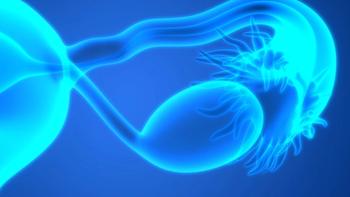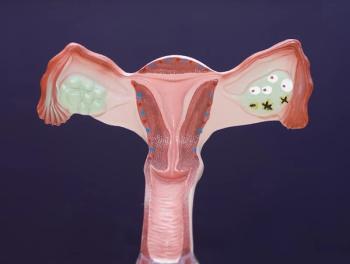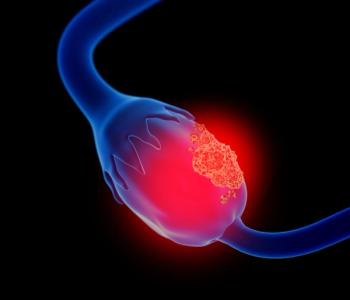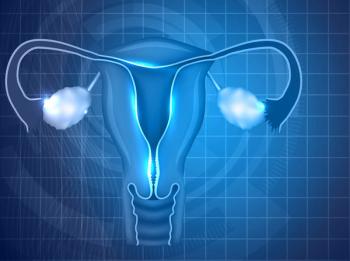
You Are What You Drink
For 5 decades, Maine, Vermont, and New Hampshire have reported a 20% higher rate of bladder cancer than the United States overall. A recent extensive population-based, case-control study sought to evaluate suspected risk factors for these findings -- namely, the presence of arsenic in drinking water from private wells.
For 5 decades, Maine, Vermont, and New Hampshire have reported a 20% higher rate of bladder cancer than the United States overall.1 A recent extensive population-based, case-control study sought to evaluate suspected risk factors for these findings – namely, the presence of arsenic in drinking water from private wells. Patients with bladder cancer (n = 1,213) and control subjects (1,418) in these states were compared.
Study participants who consumed water from private wells (particularly shallow dug wells which are vulnerable to contamination from arsenical pesticides) were associated with heightened risk for bladder cancer.1 The International Agency for Research on Cancer (IARC) has classified inorganic arsenic in drinking water as a Group 1 carcinogen.2 In their review of 3 decades of research on arsenic exposure in drinking water, Canadian researchers also reported heightened risk for renal cancer.3 Unclear is the additive risk effect of tobacco exposure, another major etiology of urological primaries, in patients diagnosed with these cancers.
Another study sought to identify the relationship between the intake of sugar-sweetened beverages (SSB) with endometrial cancer. These epidemiologists from Minnesota and the District of Columbia evaluated the dietary intake of sugar-sweetened beverages, fruit juice, sugar-free beverages, sweets/baked goods, starch and sugars, among over 23,000 postmenopausal women participating in the Iowa Women’s Health Study.4 Higher intake of SSB and sugars was associated with an increased risk of type I endometrial cancer, the variant which is estrogen-dependent and more clinically aggressive than type II endometrial cancer. The researchers acknowledged previous investigations linking diabetes and obesity with endometrial carcinogenesis.5-7
Of note is that SSBs are the leading source of added sugars in the American diet and that SSB consumption directly parallels the increasing prevalence of obesity in the United States.8-10
An enhanced focus on prevention is a priority strategy to reduce the global burden of cancer.11As oncology nurses, we owe it to our patients to educate them about current findings within the realm of cancer prevention research. Not only does increased education empower them with knowledge, it also empowers them to engage in positive lifestyle behaviors and decisions that potentially augment their recovery and future health.
References:
- Baris D, Waddekk R, Beane Freeman LE, et al. Elevated bladder Cancer in Northern New England: The Role of Drinking Water and Arsenic. J Natl Cancer Inst. 2016 May 2;108(9).
- International Agency for Research on Cancer. IARC: Monographs on the Evaluation of Carcinogenic Risks to Humans: Drinking Water Disinfectants and Contaminants, including Arsenic. (2007).
- Saint-Jacques N, Parker L, Brown P, Dummer TJ. Arsenic in drinking water and urinary tract cancers: A systematic review of 30 years of epidemiological evidence. Environ Health. 2014 Jun 2;13:44.
- Inoue-Choi M, Robien K, Mariani A, et al. Sugar-sweetened beverage intake and the risk of type I and type II endometrial cancer among post-menopausal women. Cancer Epidemiol Biomarkers Prev. 2013 Dec;22(12):2384-94.
- Lambe M, Wigertz A, Garmo H, et al. Impaired glucose metabolism and diabetes and the risk of breast, endometrial, and ovarian cancer. Cancer Causes Control. 2011 Aug;22(8):1163-71.
- Lai GY, Park Y, Hartge P, et al. The association between self-reported diabetes and cancer incidence in the NIH-AARP Diet and Health Study. J Clin Endocrinol Metab. 2013 Mar;98(3):E497-502.
- Zhang ZH, Su PY, Hao JH, Sun YH. The role of pre-existing diabetes mellitus on incidence and mortality of endometrial cancer: A meta-analysis of prospective cohort studies. Int J Gynecol Cancer. 2013 Feb;23(2):294-303.
- Guthrie JF, Morton JF. Food sources of added sweeteners in the diets of Americans. J Am Diet Assoc. 2000 Jan;100(1):43-51, quiz 49-50.
- Schulze MB, Manson JE, Ludwig DS, et al. Sugar-sweetened beverages, weight gain, and incidence of type 2 diabetes in young and middle-aged women. JAMA. 2004 Aug 25;292(8):927-34.
- Vartanian LR, Schwartz MB, Brownell KD. Effects of soft drink consumption on nutrition and health: A systematic review and meta-analysis. Am J Public Health. 2007 Apr;97(4):667-75.
- Meyskens FL, Mukhtar H, Rock CL, et al. Cancer Prevention: Obstacles, Challenges, and the Road Ahead. J Natl Cancer Inst. (2016) 108 (2): djv309.
Newsletter
Stay up to date on recent advances in the multidisciplinary approach to cancer.


















































































